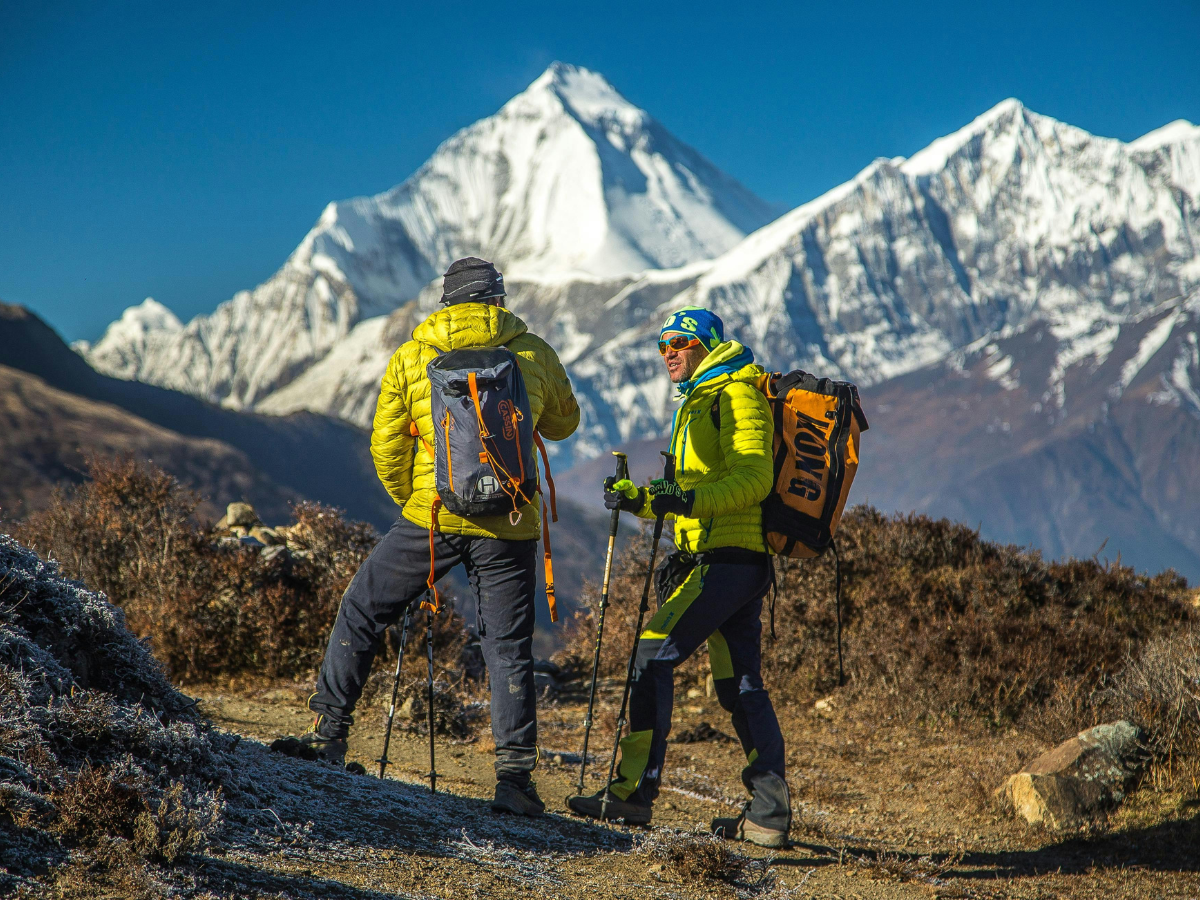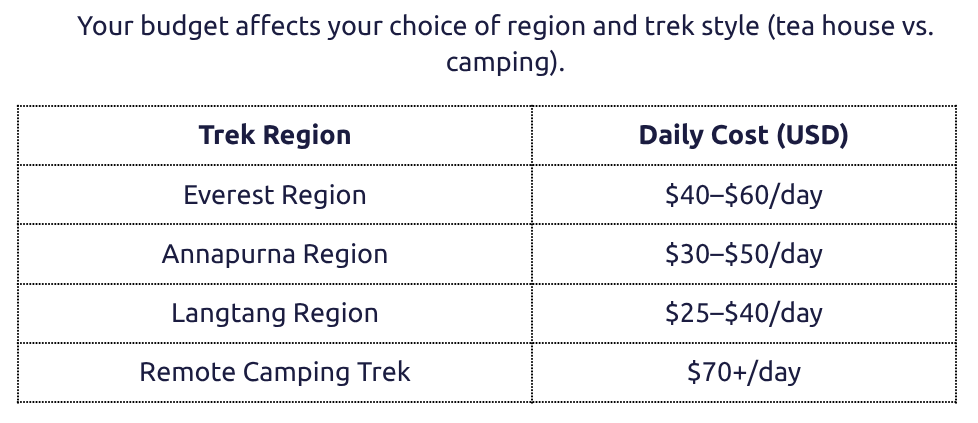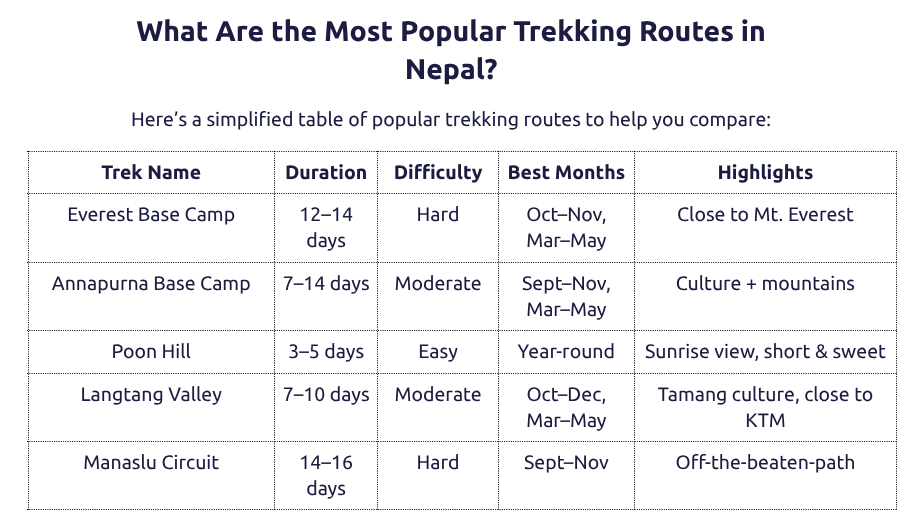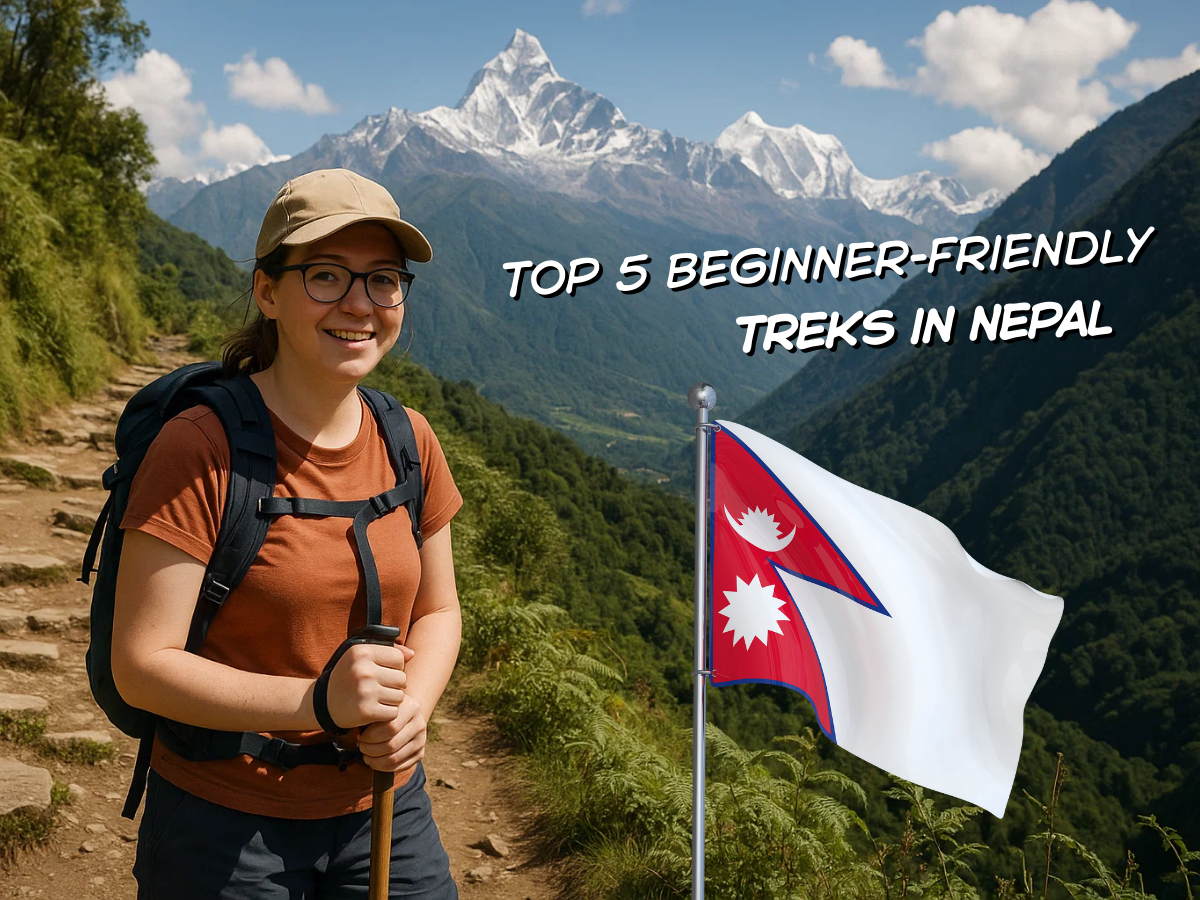
In 2023, according to The Rising Nepal, 15% of the total 1,014,882 tourists who visited Nepal came for trekking and mountaineering activities. Choosing the right trekking route is more than just picking a trail — it's the key to a life-changing experience.
If you're searching for “how to choose the right trekking route in Nepal”, chances are you're feeling confused with too many options. Everest, Annapurna, Langtang... they all look beautiful, but which one’s right for you?
Don’t worry. In this blog, you’ll get a clear, easy-to-follow guide to pick the perfect trek based on your fitness, travel time, budget, and adventure level — even if this is your first trek ever.
Let’s help you get it right, the first time.
Why Does Choosing the Right Trek in Nepal Matter?
Choosing the wrong trek can lead to altitude sickness, wasted money, and even turning back mid-way. But picking the right trek brings joy, memories, and the feeling of achievement.
What Should I Consider When Choosing a Trek in Nepal?
Let’s break it down in simple steps.
1. What’s Your Fitness Level?
Nepal has treks for every fitness level.
➤ Easy Treks (Great for Beginners & Families)
Ghorepani Poon Hill
Nagarkot to Dhulikhel
Ghandruk Loop
Features:
3–5 days
Max altitude: 3,200m
Gentle trails, good lodges
➤ Moderate Treks (Some Experience Needed)
Mardi Himal Trek
Features:
6–10 days
Altitude: 3,500–4,100m
Some steep sections, but manageable with prep
➤ Challenging Treks (For Fit & Experienced Trekkers)
Three Passes Trek
Features:
10–20+ days
Altitude: 5,000m+
Demanding terrain, long walking hours
Pro Tip: If you go to above 2,500m, spend extra days acclimatizing.
2. How Many Days Do You Have?
Don’t try to squeeze in a 14-day trek into a 7-day holiday.

Plan at least 2 buffer days for travel delays, weather, or rest.
3. Which Season Are You Trekking In?
Nepal has 4 trekking seasons. Picking the right trek based on the season saves you from bad weather.
Best Time to Trek:
Autumn (Sept–Nov) and Spring (March–May)
Clear skies, stable weather, full bloom in spring
Monsoon (June–August):
Risk of leeches, landslides
Opt for rain-shadow treks like Upper Mustang
Winter (Dec–Feb):
Freezing at higher altitudes
Try low-altitude treks like Panchase or Helambu
4. What’s Your Budget for Trekking in Nepal?
Budget affects your choice of region and trek style (tea house vs camping).

Extra costs to consider:
Flights (esp. to Lukla for Everest)
Permits (TIMS, ACAP, etc.)
Guide/porter fees
Gear rental or purchase
5. Are You Going Solo or with a Group for Nepal Trekking?
Nepal allows solo trekking in some areas, but as of April 2023, the Nepal Tourism Board requires a licensed guide for most treks for safety reasons.
Group Treks
Cost-sharing on guide/porter
Safer, social
Solo (with Guide)
More flexible
More expensive
Tip: Avoid going completely solo in remote areas. Weather and terrain can change quickly.
What Are the Most Popular Trekking Routes in Nepal?
Here’s a simplified table of popular trekking routes to help you compare:

Step-by-Step Guide to Choose the Right Trek in Nepal
Step 1: Set your trek goal
- Do you want adventure, culture, views, or solitude?
Step 2: Check your availability
- Match trek duration with your holiday days.
Step 3: Assess your fitness
- Choose accordingly (start with easy if unsure).
Step 4: Pick the right season
- Avoid monsoon for high altitudes.
Step 5: Finalize region and route
- Choose based on cost, interest, and logistics.
Step 6: Arrange guide & permits
- Contact a local agency or guide in Nepal.
Step 7: Prepare gear & travel insurance
- Pack smart and stay insured.
Actionable Tips for First-Time Trekkers
Acclimatize properly: Follow the climb high, sleep low rule.
Don’t overpack: You don’t need 3 jackets.
Train in advance: Cardio and leg strength really help.
Stay hydrated: Bring water-purification tablets.
Use trekking poles: They reduce knee strain.
Get travel insurance: Must cover high altitude trekking.
Check: Why Travel Insurance Is a Must for Trekking in Nepal
Key Takeaways
Nepal offers treks for every fitness level and budget.
Best treks depend on season, days available, and your experience.
Start with easy treks like Poon Hill if you’re unsure.
Don’t underestimate altitude — always plan rest days.
A local guide is now required for most treks for safety.
Quick Fact:
According to the Nepal Tourism Statistics 2023, trekking tourism has rebounded strongly post-COVID, with over 300,000+ trekkers visiting major trekking regions, making Nepal one of the world’s top trekking destinations.
Helpful Sources:
Nepal Tourism Board: ntb.gov.np
Department of Immigration Nepal: www.immigration.gov.np
Nepal Hiking Team - Local trekking agency
Real feedback from trekkers on TripAdvisor and TheTrek.co
Not Just a Goodbye — Your Adventure Starts Now!
Trekking in Nepal isn’t just about walking — it’s about reconnecting with nature, testing your limits, and experiencing the beauty of Himalayan culture.
Whether you pick a short, scenic route like Poon Hill or go all-in with Everest Base Camp, what matters most is that the trek matches you — your goals, your fitness, and your dreams.
So go ahead… choose wisely, trek safely, and return with stories worth telling.





Write a comment ...